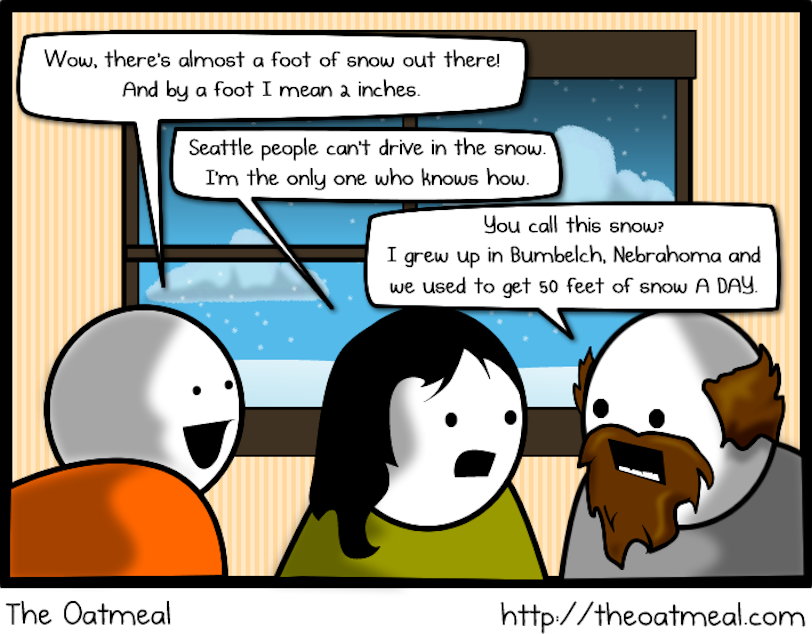Seattleites: Do You Know How To Drive On Ice And Snow?

Every winter, Seattleites return to a hotly debated topic: Do we know how to drive in ice and snow? My coworkers are all complaining about Seattle drivers as I type, in fact — even those from the Northwest originally. So here are a few tips I gleaned from watching way too many YouTube videos.
Of course, the number one advice is to stay home if you can. But if you have to get out,
Pedestrians
Don't be a good Samaritan. If you see a car slipping on a hill, don't get behind it and push. Chances are you will fall and the car will roll over you.
When walking on a hill, keep an eye out for cars. Get ready to jump out of the way.
Sponsored
Drivers
Check the weather report and wait out extreme weather before you hit the road.
Make sure someone knows when you leave and when you expect to get to your destination.
Keep your tank at least half full to avoid extra condensation freezing up the gas line. A full tank is even better if you get stuck in traffic or need extra heat if you get stranded.
Keep a supply of extra clothing, food, water, a fully charged cell phone, and extra medication in your car.
Sponsored
Check your car before driving. Check tire tread and pressure to make sure they're in good condition. (Also, get snow tires if you can. Studded tires are allowed on Washington roads from Nov. 1-Mar. 31.) Clean all windows, mirrors and lights for complete visibility. Clear windshield wipers of any snow or ice. Clear your roof as well — there's nothing like driving behind a car and getting 50 pounds of snow from their roof land on your windshield.
Know whether you have front, back or all-wheel drive. That will help determine where to install chains or apply more weight to the car if it gets stuck. Here's a cool tip for front-wheel drive cars to get up a hill: Try driving in reverse to put more weight and traction on the front of the car.
Know whether you have ABS (anti-lock braking system), which will allow you to have different braking techniques. Drivers with ABS, when stopping a car in slippery conditions, apply full pressure to brakes and let the car control the traction. Drivers without ABS will need to pump their brakes: Apply pressure until the tires lock, then quickly release. Pump brakes until the car comes to a stop.
Go slow: accelerate and decelerate gradually, drive half the speed limit, and allow plenty of following room (10 times the normal space) between you and the car in front of you.
Drive with low-beam lights on. Signal early.
Sponsored
Don't use cruise control when driving in icy conditions (frankly, I can't believe I had to type that).
Do one thing at a time: brake, then turn wheels, then accelerate.
Techniques for getting out of a skid
If you start to skid, don't panic, don't decelerate (if possible) and steer where you want to go.
If the car over-steers, correct by steering where you want to go and gradually accelerate to add traction.
Sponsored
If the car under-steers, correct by straightening your wheels.
Practice, practice, practice — in an empty parking lot, of course.
And don't drive like these Portlanders
Thanks to TheOatmeal.com for the spot-on comic.
